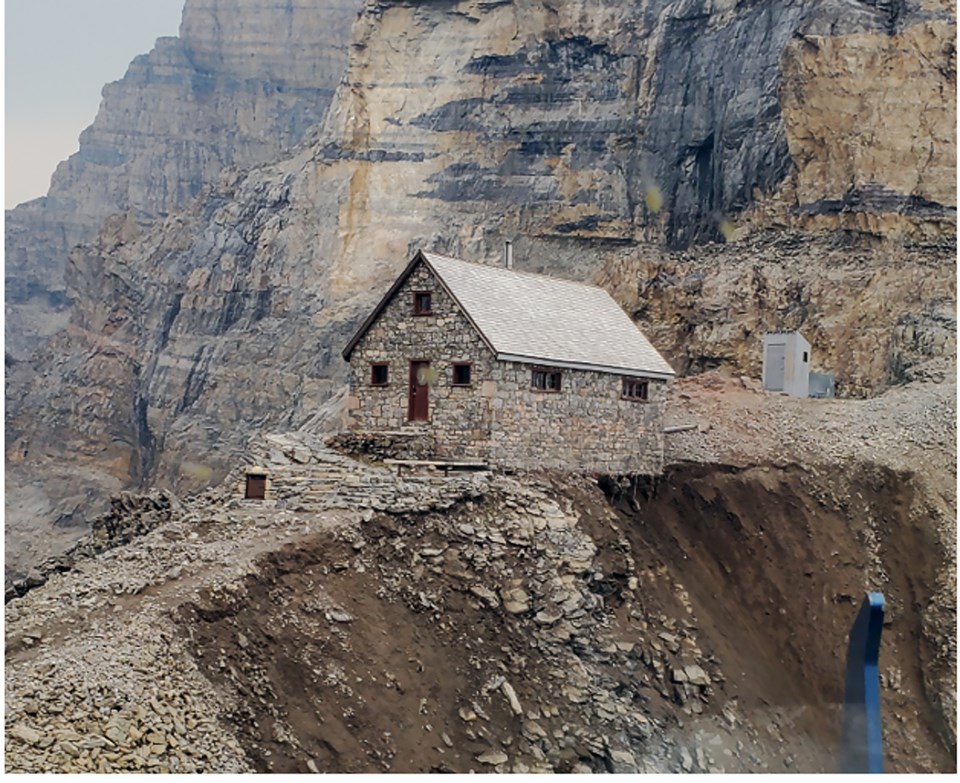BANFF – Parks Canada has opened the door to development of new alpine huts in Banff National Park.
Development of commercial roofed accommodation in wilderness zones has long been prohibited, however, the new 2022 management plan for Canada’s first national park states there is a possible exception to that – with caveats.
According to the plan released on Aug. 22, Parks Canada will consider new huts at or above treeline in cases where there are “demonstrable, persistent public safety risks” and if it can be determined there are “no adverse environmental impacts.”
Sal Rasheed, superintendent of Banff National Park, said the management plan commits to long-standing direction that these wilderness areas are mostly maintained in their natural state, with limited infrastructure and no motorized access.
“However, with exception – and exception being the operative word here – we will think about or consider these huts at or above treeline where there’s some demonstrated public safety issue,” he said.
“It’s not a commercial operation; it’s more if there’s consistent public safety issues in those high elevation areas, and climbers get up there and they are constantly getting lost or constantly needing a safe place to harbour, we’d probably think about that.”
Many alpine huts in the mountain parks are operated by the Alpine Club of Canada (ACC), such as Bow Hut, Peter and Catharine White Hut, R.J. Ritchie Hut, Neil Colgan Hut and Castle Mountain Hut.
The historic Abbot Pass Hut, built by Swiss-born mountain guides in 1922 at 2,925 metres above sea level on the Continental Divide, was dismantled by the end of June because ongoing erosion associated with climate change made the building unsafe.
The hut, which was a national historic site, was administered by Parks Canada and was operated by the ACC.
Parks Canada offers two huts for overnight stays in Banff – the Egypt Lake Shelter, located eight miles from Sunshine Village, and the Bryant Creek Shelter closer to the neighbouring B.C. Mount Assiniboine area.
The new park management plan indicates that Bryant Creek and Egypt Lake shelters will be replaced in a manner “consistent with the location and Parks Canada standards” for such facilities by 2025.
Rasheed said management and operation of any potential new huts – which must be the smallest size needed to address the identified safety risks – has not been determined yet.
“We certainly have a working relationship with the Alpine Club, and we have many huts managed through them… we also manage some of our own,” he said.
“It is too early for me to tell what the model would look like.”
Parks Canada also wasn’t able to say where potential locations could be based on “demonstrable, persistent public safety risks” at this time.
“It’s not that I don’t want to, I don’t know,” said Rasheed.
The Alpine Club of Canada was not in a position to comment at this time.
“As we’ve only received the Parks management plan two days ago, it’s too early for us to comment,” said Keith Haberl, the ACC’s marketing and communications director in an email.
Conservationists say they like the tone and general direction of the new management plan.
However, Reg Bunyan, past president of Bow Valley Naturalists, said the group is concerned with the continued focus on tourism areas with high visitation to the potential ecological and experiential detriment of other busy areas, such as day-accessible wilderness areas.
“While the plan has a number of laudable goals and details, it is notably vague on a number of initiatives that potentially have serious ecological impacts, such as the possible expansion of alpine huts and the replacement of the Egypt Lake and Bryant Lake shelters,” said Bunyan.
“As always, the devil is in the details and the vague statements without context or more information leaves us with a feeling of unease.”



